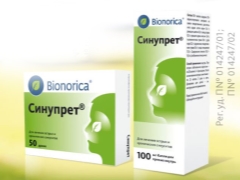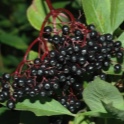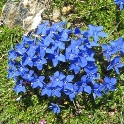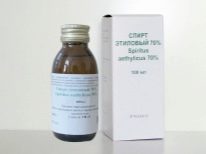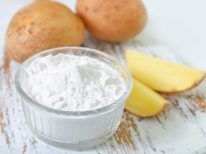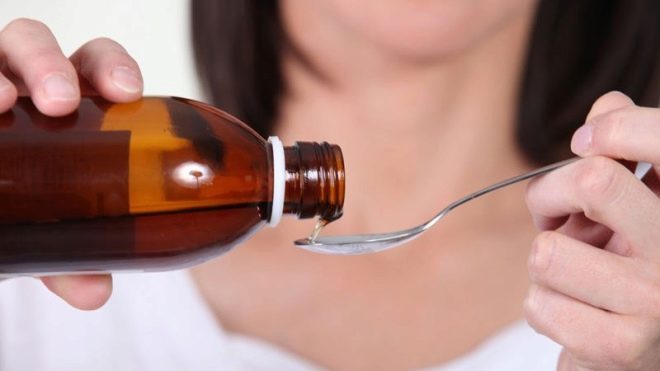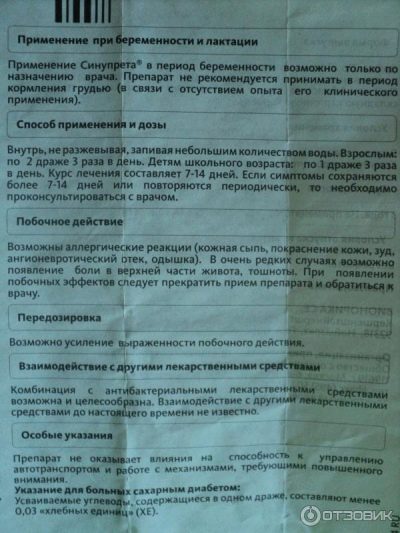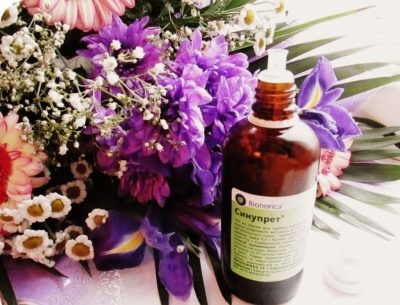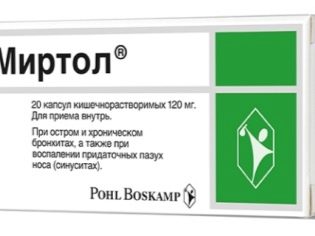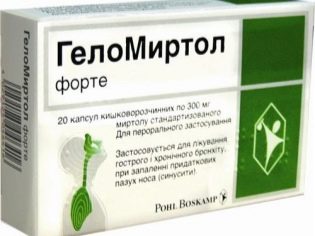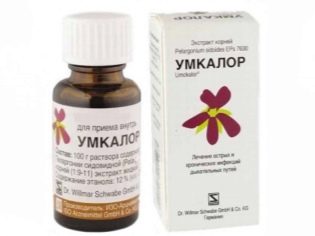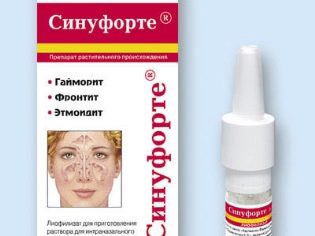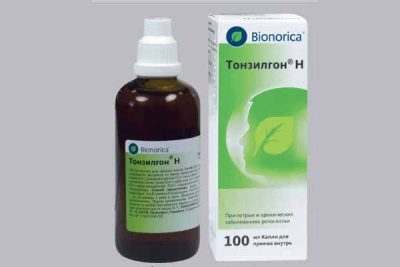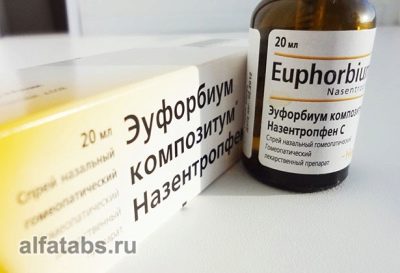Sinupret for children: instructions for use
Runny nose and sinusitis are quite common problems in both adults and children of different ages. However, not always for the treatment of such diseases apply local remedies that drip or splash into the nose.
Some of the drugs that act on the mucous membrane of the nasopharynx are taken by mouth, for example, they include a medicine called Sinupret. Thanks to herbal based it is popular in treating children. When it is prescribed to young patients, how to give babies correctly and how long can it be taken in childhood?
Release form
Sinupret is produced by the German company Bionorica in two forms.
- Drops that are taken inside. This drug is sold in bottles made of dark-colored glass. On the bottle for easy dosing there is a drip device. Inside the bottle flooded with yellowish-brown aromatic liquid. It is rarely transparent, as the plant raw material in the composition of the drug usually falls in a small sediment or causes a slight turbidity. However, such turbidity or the presence of settled particles at the bottom does not indicate damage to the medicine, but is considered normal.
- Dragee. This Sinupret is placed in blisters of 25 pieces, and one pack contains 50 or 100 pills. They have a convex round shape and a greenish shell.
In capsules, spray, ampoules, tablets, nasal drops and other forms of such a drug is not made.
Composition
The action of both forms of Sinupret is provided by extracts from five plants, including:
- elder - for the medicine its flowers are used, rich in vitamin C, essential oils and organic acids;
- gentian - an extract of its roots containing gentianin is included in the drug;
- verbena - the preparation includes an extract from the herb of such a plant, which contains verbenamine, flavonoids, tannin and other compounds;
- sorrel - for drops and dragee need his grass, rich in trace elements;
- primrose - in the medicament add extract of its colors, acting as a source of essential oils, carotenoids, vitamins and other substances.
The content of the extract from the gentian per 100 grams of drops is 0.2 g, and other extracts are presented in this form of Sinupret in the amount of 0.6 g. The same ratio is used in the manufacture of solid preparation. In one dragee, gentian extract is presented in a dose of 6 mg, and the remaining extracts - 18 mg each.
Extracts from plants, which are contained in Sinupret in drops, are water-alcohol, and only pure water and ethanol act as additional components of this product. The content of ethyl alcohol in the drug is 16-19% of the total drug.
The dragee extracts are supplemented with potato starch, stearic acid, silica, gelatin, lactose, water, and sorbitol. These components form a dense core of the drug, and sucrose, green varnish, dextrin, castor oil, talc, mountain wax and some other compounds are used to make the shell of such Sinupret, due to which it becomes dense and smooth.
Operating principle
The components of Sinupret, extracted from medicinal plants, comprehensively affect the patient's body. Biologically active compounds in their composition have such effects.
- Anti-inflammatory. All the active ingredients of the drug note the ability to localize and eliminate the inflammatory process in the cells of the mucous membrane.
- Secretolytic. Due to the presence of substances from Verbena and Gentian in Sinupret, the mucus that forms on the surface of the nasopharyngeal mucosa becomes thinner.
- Decongestant. The drug helps to reduce tissue swelling, contributing to its resorption.
- Secret motor. The drug affects the activity of mucus production in the respiratory tract and prevents its stagnation, because it facilitates its outflow.
- Moderate antibacterial. Sinupret not only directly affects harmful microbes, but also further enhances the effectiveness of antibacterial treatment.
- Antiviral. Thanks to extracts from vervain and primrose, the drug has properties to suppress the activity of certain viruses (respiratory syncytial, parainfluenza, influenza).
Due to this effect, the exudate formed in the nasopharynx becomes more liquid and is easier to stand out, with the result that the nasal cavity is cleared of mucus. This action helps prevent possible complications, such as otitis media. In addition, with Sinupret treatment, the drainage function of the paranasal sinuses is restored, the nasal cavity and paranasal sinuses are cleared, and breathing through the nose is facilitated.
The drug also strengthens the local immunity by stimulating the protective function of the epithelium of the nasopharynx.
Indications
The main reason for prescribing Sinupret LOR-doctors is sinusitis (frontal sinusitis, sphenoiditis, sinusitis, or ethmoiditis), in which a viscous secret is formed in the nasopharynx. The drug is used in acute inflammation and in the chronic inflammatory process. It is also prescribed for rhinitis, tracheobronchitis, pharyngitis, adenoiditis, or laryngotracheitis.
From what age can I give?
The drug in drops used in the treatment of children older than two years. If the child has not yet turned 2 years old, then he should, together with the doctor, pick up another medicine that is safe for babies in the first years of life.
Sinupret in solid form is prescribed not earlier than 6 years of age, since studies on the use of dragees in younger children have not been carried out and it is more difficult to swallow such a remedy for young children than to take drops.
Contraindications
Both types of Sinupret do not give hypersensitivity to any of the components of the drug. Since the drops include alcohol, they are carefully prescribed for injuries and brain diseases, as well as for children with epilepsy and liver diseases. Dragee due to the presence in their composition of lactose, sucrose and glucose syrup is not prescribed for such problems:
- lactase deficiency;
- fructose intolerance;
- deficiency of sucrase-isomaltase;
- lactose intolerance;
- galactose intolerance;
- glucose-galactose malabsorption.
Side effects
Due to herbal ingredients, Sinupret can provoke allergies. Such a reaction to the medication is manifested by reddening of the skin, shortness of breath, itching, angioedema, or skin rash. In addition, in some patients, medication may cause problems with the digestive tract, such as stomach pain or nausea.
If these side effects appear after one or more doses of Sinupret, you should stop the treatment and show the child to the doctor.
Instructions for use
Since the extracts in the composition of the drops during storage may settle to the bottom, such a drug must be shaken before each use. Liquid Sinupret in the dose prescribed by the doctor is dripped into a small amount of water, and then given to the child to drink.
Drops offer to swallow without biting, so as not to damage its shell. Wash down the drug should be clean water. If a child is older than 6 years old, but he has difficulty in swallowing solid medications, it is acceptable to use drops.
The dose of Sinupret in liquid form for a child of 2-6 years old is 15 drops, for school-age patients - 25 drops.
A single dosage of solid medicine for children over six years is one tablet. Both types of medication should be taken three times a day, and the course of treatment usually lasts from 7 days to two weeks.
If at the end of this period the symptoms of the disease still remain, a medical examination is required, which may prescribe a repeated intake of Sinupret.
Inhalation
Sometimes ENT doctors dispose of Sinupret to children not inside, but in the form of inhalations that are made in a nebulizer. For such procedures, you can use only drops. Before inhalation, they are diluted with saline, using the following proportions:
- for a child 2-6 years old on 1 part of Sinupret take 3 parts of saline;
- if the patient is older than 6 years, then the drops are diluted in a 1: 2 ratio;
- for adolescents 16 years and older, the drug is recommended to be diluted twice (1: 1).
For one inhalation use 3-4 ml of the solution prepared in the specified proportion, filling it in a nebulizer. The procedure is performed three times a day, and during inhalation the child must breathe through his nose.
One of the side effects of this treatment is a change in the color of the mucous membrane - it becomes yellow-brown, like the drops themselves. This is not dangerous, and soon after the inhalation course is over, the color returns to normal.
Overdose
If you accidentally drink the drug in a higher dose, it can provoke an allergy or a negative reaction of the gastrointestinal tract, for example, cause severe nausea. In case of overdose, it is recommended to see a doctor and use symptomatic agents.
Interaction with other drugs
Sinupret is often prescribed with antibacterial agents (Zinnat, Suprax, Azithromycin, Panklav, Augmentin and others), because drops or drops only eliminate the symptoms, and antibiotics affect the cause of the disease.
There is no information about incompatibility with other medicines in the instructions for Sinupret.
Terms of sale
Drops Sinupret sold in a pharmacy without a prescription. A doctor's prescription is also not required to purchase dragees, but a patient's examination is desirable, because a pediatrician or ENT doctor will not only determine the need for treatment with such a remedy, but also prescribe other drugs to influence the disease in a complex way.
The average price of 50 pills is 350 rubles, and for one bottle of drops you need to pay from 340 to 400 rubles.
Storage conditions
Sinupret should be kept at home in a dry place where sunlight does not fall. In addition, the drug must be inaccessible to kids. The optimum storage temperature is below 25 degrees Celsius.
Shelf life dragee is 3 years. Drops in a sealed form can also be stored for up to three years from the date of their manufacture, but after the first use, such a drug should be used for 6 months.
If the bottle was opened half a year ago, but the solution still remains in it, it must be discarded.
Reviews
Moms and doctors speak about Sinupret mostly positively. According to parents, this is an effective tool to help with a prolonged runny nose, nasal congestion or sinusitis. The drug is praised for its natural composition and the presence of two forms, which allows you to choose the right tool for different patients.
To the disadvantages of drops include their high cost, the presence in this form of alcohol and limiting the shelf life after opening.
Plus dragee call the small size and sweet shell, so that students in most cases swallow such Sinupret without problems. Among the minuses Many mothers also note the high cost of such drugs. In addition, there are reviews with complaints of a very long manifestation of the therapeutic effect or its absence.
Doctors, among whom is the popular doctor Komarovsky, consider Sinupret to be an effective medicine and are often used in their practice for the treatment of chronic and acute processes in the paranasal sinuses and upper respiratory tract. Negative reactions to such a drug, they are very rare.
Analogs
A replacement for Sinupret can be a drug. GeloMirtolwhich also has a vegetable base consisting of alpha-pinene, cyneol and limonene. This tool is available in capsules and is used in children older than 6 years. It has a similar effect to Sinupret, so GeloMirtol is in demand for sinusitis, adenoids, bronchitis and laryngitis.
It eliminates the stasis of secretion in the nasopharynx and bronchi, helps cure cough faster, reduces the activity of inflammation and prevents further spread of infection through the respiratory tract.
There is also a drug GeloMirtol forte. It is also represented by capsules, but the dosage of all the active substances in them, compared to regular GeloMirtol, is increased 2.5 times. This drug is prescribed to patients over 10 years old.
Another similar Sinupret analogue can be called Sinuforte. This remedy of plant origin is in demand in the inflammatory process in the nose and paranasal sinuses. Its therapeutic effect provides an extract from cyclamen.
This medication is produced in the form of bottles with lyophilisate. Adding inside the solvent (water for injection), get a solution that is sprayed on the nasal mucosa. In children, the drug can be used from 5 years of age.
The doctor may also advise instead of Sinupret Umkalor. This solution contains an extract of pelargonium, which has mucolytic and antimicrobial properties.
It is popular in the complex treatment of various diseases of the respiratory tract in children, because it has a plant base and is approved for patients older than one year. This remedy is taken internally.
Is it possible to give simultaneously with Tonsilgon?
A drug Tonsilgon N It is also a product of Bionorica and is available in the same dosage forms as Sinupret. This is also a herbal remedy, but its composition is different - in the medicine there are extracts from Althea, Oak, Horsetail, Chamomile, Yarrow, Dandelion and other plants.
The main action Tonsilgona H is anti-inflammatory and antiseptic. Such effects allow using this remedy together with Sinupret in pharyngitis, laryngitis and viral infections (to prevent complications). The drug is given in drops to children older than a year, and dragees from the age of six.
Does it apply with Euphorbium?
Unlike Sinupret, a drug called Euphorbium Compositum Nazentropfen C is a homeopathic remedy. In addition, it comes in the form of a nasal spray. Common to such medications are only indications, since both funds are prescribed for rhinitis and sinusitis. Their simultaneous use is not prohibited, but Euphorbium should not be sprayed by children under 4 years of age.
Dr. Komarovsky will talk about sinus and its treatment in the next video.
